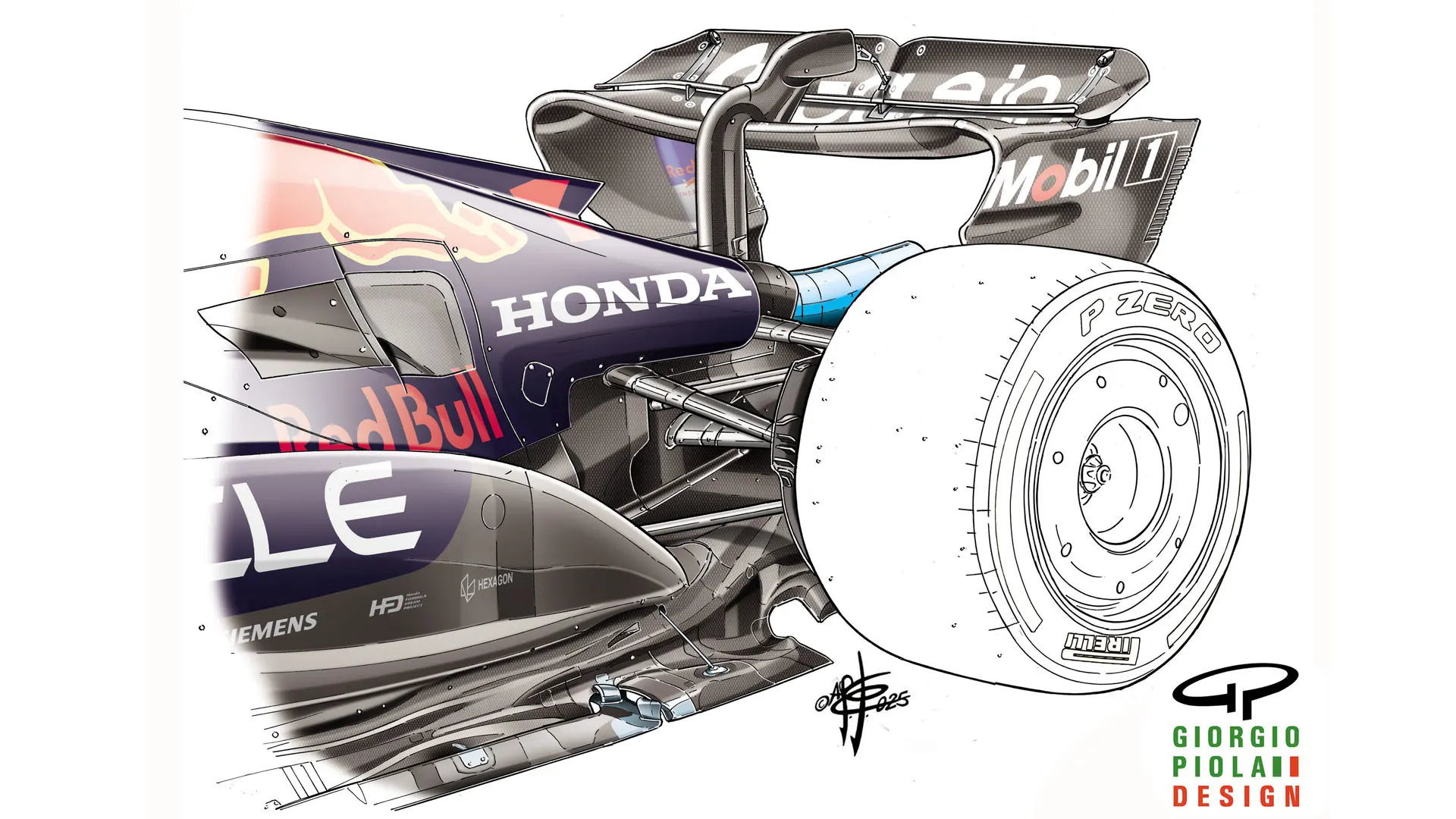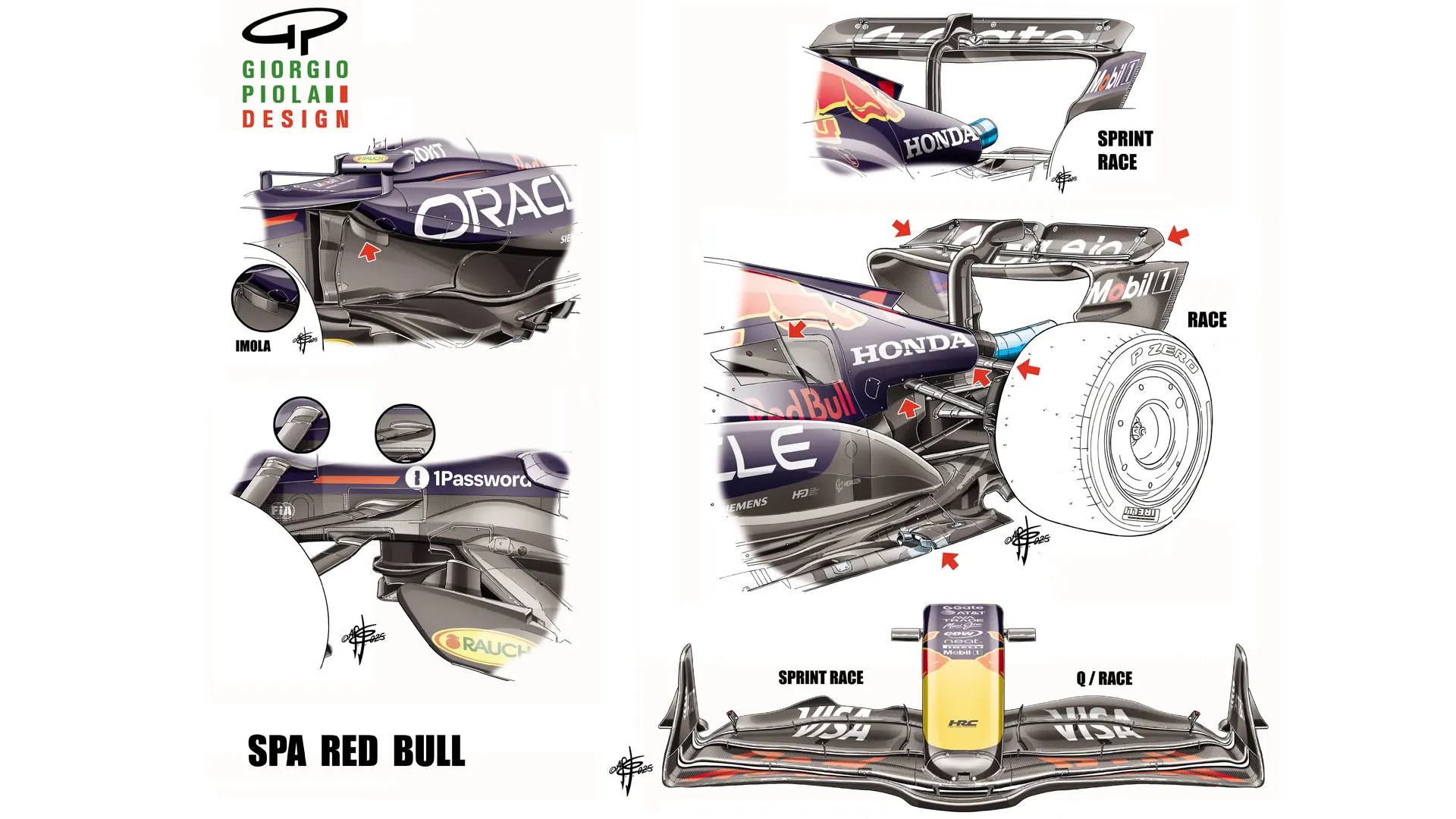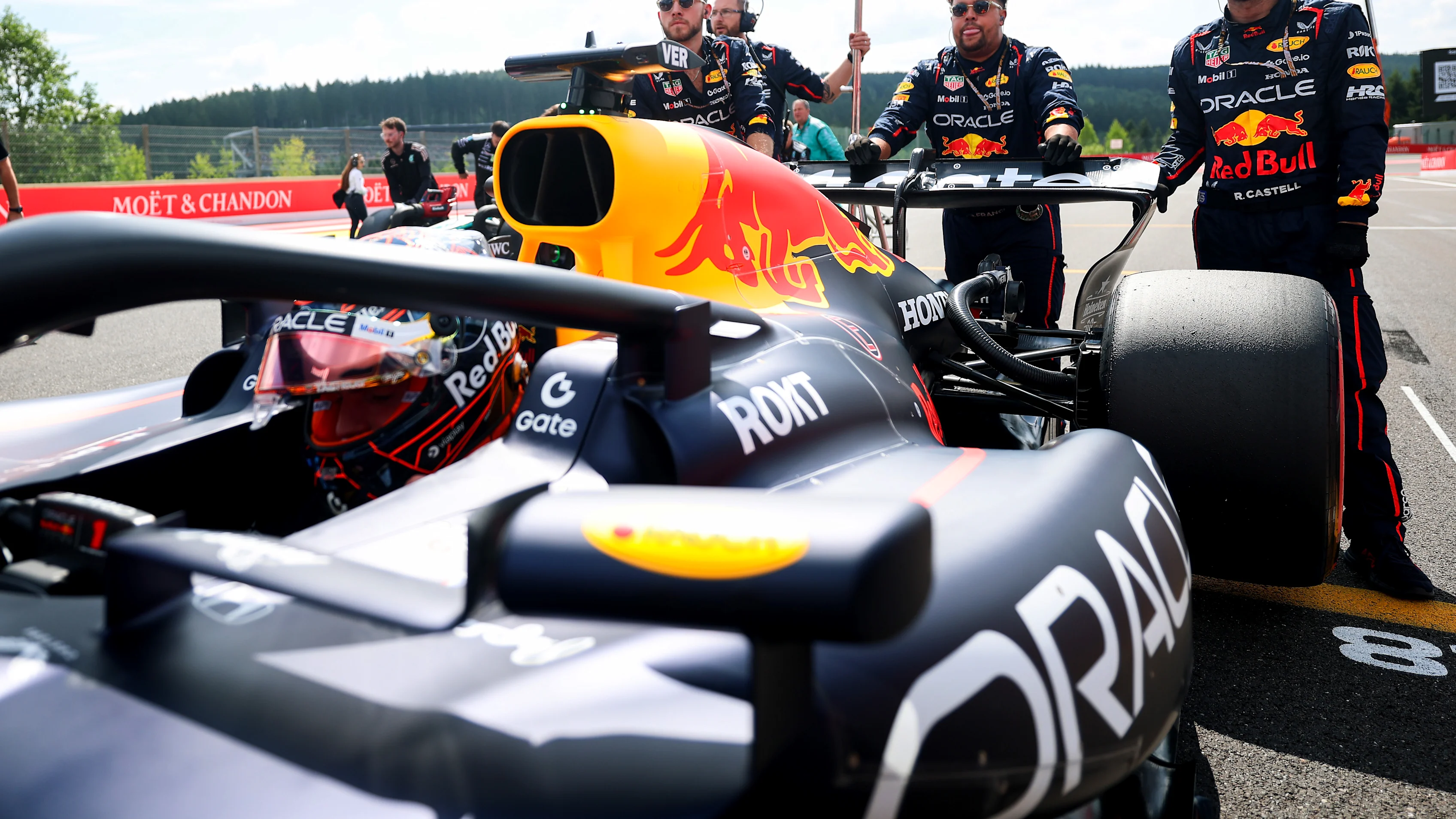TECH WEEKLY: The Spa tweaks that show Red Bull aren’t giving up on 2025 success
Despite McLaren’s weighty Teams’ Standings advantage and the looming 2026 regulations, Red Bull’s Spa updates show that they haven’t been resting on their laurels.


Red Bull continue to develop their 2025 RB21, which arrived at Spa with an extensive aerodynamic update. This incorporated the front wing, front suspension fairings, sidepod and engine cover, and complements the new floor introduced two races earlier in Austria.
The front wing features revised geometry for the first and second flap elements, to adjust the distribution of pressure across those two elements in a way which has been found in simulation to increase the load on the wing as a whole.
Trackside engineering chief Paul Monaghan commented, “It’s been an ongoing development process. We saw gains in CFD [computational fluid dynamics simulations] and we judged we had the time and money available to make it.”
The new wing was on the car of Max Verstappen throughout the weekend, though it featured a fuller top flap in the Grand Prix compared to that used in the Sprint. This was to give the required front downforce to balance the bigger rear wing chosen for the Grand Prix in the expectation of rain on Sunday.
The Sprint rear wing was that used at Silverstone, while the bigger Grand Prix wing was as first used at Suzuka.

The optimum balance between inlet and outlet areas determine not only the cooling capacity but also the aerodynamic efficiency of the car. With some hotter races coming up – starting with Hungary this weekend – the opportunity was taken to have an arrangement with a bigger capacity but without incurring aerodynamic losses from before. This was achieved by optimising the more favourable air pressure created around the inlets by the new suspension fairings.
The new front wing was the result of a separate programme to that of the suspension fairings/sidepod/engine cover, which were developed together. The new fairings are much more extensively sculpted where they join the chassis so as to direct the airflow more efficiently.
The new inlet arrangement sees the previous vertical and horizontal inlets merged into one, and is wider at the top. This has increased the cooling capacity for the radiators without increasing the exit area.

“In terms of practicality, we had the three-week gap between Silverstone and Spa to do it,” explained Monaghan. “Otherwise we’d have been scrabbling with whatever you can do around the shutdown or before the last of the European races to get something in.”
As a consequence of the revised sidepod shape to accommodate the new inlet arrangement, the engine cover has been adapted, and now the split line between sidepods and engine cover is different, but with the same cooling louvre options. The rear suspension shrouds are revised to meet the new cover.
All of which goes to show that, despite McLaren being a staggering 324 points to the good over fourth-placed Red Bull, the team aren’t going down without a fight.
.webp)
Next Up
Related Articles
 Mekies expects Red Bull have ‘mountain to climb’ with 2026 engine
Mekies expects Red Bull have ‘mountain to climb’ with 2026 engine F1 FantasyWin a replica race suit in F1 Fantasy's Street Showdown
F1 FantasyWin a replica race suit in F1 Fantasy's Street Showdown F1 ExplainsAsk a Team Principal with Kick Sauber's Jonathan Wheatley
F1 ExplainsAsk a Team Principal with Kick Sauber's Jonathan Wheatley Coulthard relives his career in the latest episode of ‘F1 Memory Box’
Coulthard relives his career in the latest episode of ‘F1 Memory Box’ How an F1 fan is visiting all 24 races on a £20k budget
How an F1 fan is visiting all 24 races on a £20k budget Iconic fashion partnerships that shaped F1
Iconic fashion partnerships that shaped F1